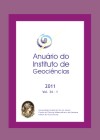Determination of Cyanobacteria in the Subsurface Sediments of Marginal at Brejo do Pau Fincado Lagoon Complex Araruama, RJ, Brazil
DOI:
https://doi.org/10.11137/2011_2_14-23Abstract
Brejo do Pau Fincado is a natural aquatic body located at the Araruama's Lagoon Complex, presenting a great variability in salinity with range from hipersaline to brackish. Intending to add information to the distribuition and ecology of cyanobacterial taxons, this study shows a survey of the subsurface cyanobacteria in brejo do Pau Fincado. Within this objective, samples were collected monthly from december 2008 to october 2009, the period of ebb and flood tide. The taxonomic analysis processing involved the preparation of permanent and fresh slides, through optic microscope measurement, that allowed to observe its classic morphological characteristics. Based on optical microscopy analysis identified 19 species of cyanobacteria subsurface were conducted monthly collections of superficial water and the analysis were based in optical microscopy, and revealed 19 psammic cyanobacterial species. The genus Aphanothece is the most representative qualitatively with a frequency of 31,58%. The species Aphanothece stagnina, A. halophytica and Spirulina subsalsa were the most expressive visually, being well adapted to a high salinity gradient and they are also the species more halotolerants and eurihaline of this community.Downloads
Download data is not yet available.
Downloads
Published
2011-01-01
How to Cite
Silva, L. H. da S. e (2011) “Determination of Cyanobacteria in the Subsurface Sediments of Marginal at Brejo do Pau Fincado Lagoon Complex Araruama, RJ, Brazil”, Anuário do Instituto de Geociências. Rio de Janeiro, BR, 34(2), pp. 14–23. doi: 10.11137/2011_2_14-23.
Issue
Section
não definida
License
This journal is licensed under a Creative Commons — Attribution 4.0 International — CC BY 4.0, which permits use, distribution and reproduction in any medium, provided the original work is properly cited.















